60-65°F. Sunny. 
Temperatures had been in the teens for almost a week, so I had cabin fever. Sunday was a gorgeous warm day, so off I went to my favorite local hike.
My first sighting was about 1.5 miles into it, some bright green moss. It stood out like a lush oasis in all the browns of the scrub oak forest. The light was hitting it just right, and fallen acorn tops looked like little cup fungi. It wouldn’t surprise me at all to see a cup fungus growing here in season.
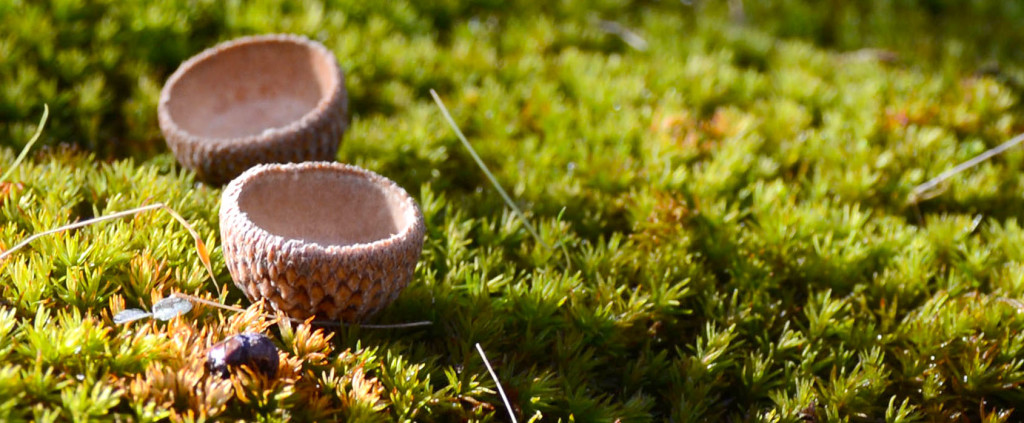
I spotted some polypores further down the trail, they had been there for a while but were still beautiful. They were very hard, like dried wood.
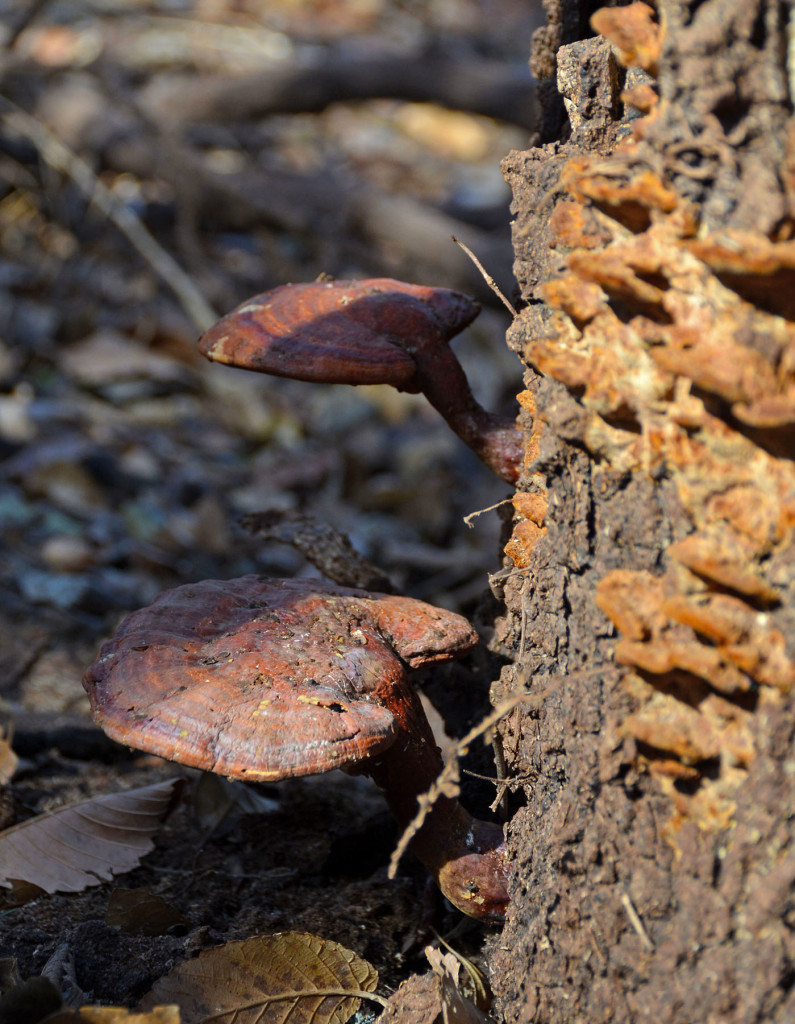
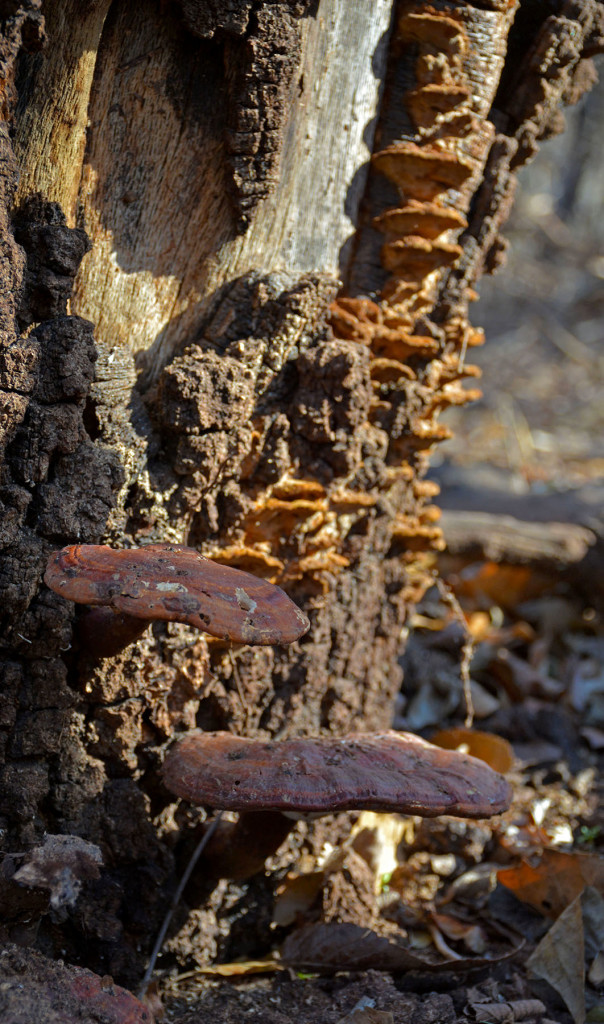
The creek was passable at the normal Spring Creek crossing, but we went last years route through the woods. I hadn’t seen that area since tick season (summer), and then Orb Spider season (shudder). There was no color or life in the woods, just the occasional green osage orange fruit. The temporary bike trail hadn’t been used in a while, so the track disappeared in several areas. After crossing the creek and getting back on the trail I encountered some cyclists. Nice folks getting a good workout in, I saw several more sets of cyclists later during this hike.
Around the Swamp Trail area, my foot stopped in mid air as I caught sight of something unusual. Right away I thought – Snake! Freeze! It wasn’t coiled or stretched out sunning, it looked strange to me. It had a thick neck, so I thought maybe his head was swollen from injury. It looked like the tail had been broken off and regrown. Its little nose was pink like it had been rubbing it on something. Its eyes were closed.
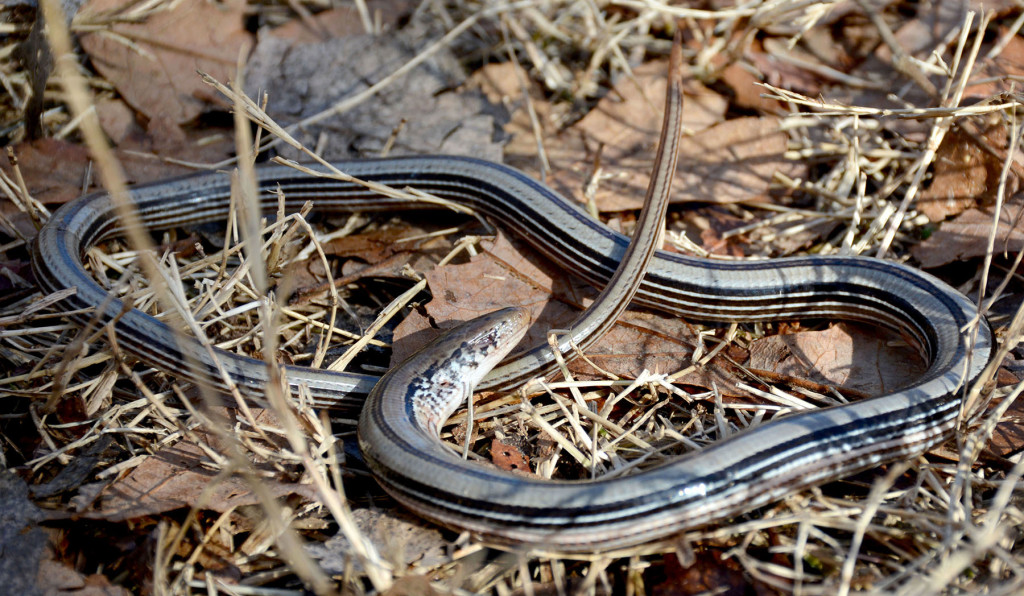
I took pictures from several angles and knew it was dead since it didn’t notice me or move. Poor thick-necked thing. The key features from my observations (that should have made it obvious at the time) led me to realize that this was no snake! It was Oklahoma’s only legless lizard – the Western slender glass lizard (Ophisaurus attenuatus). I had this identification confirmed by Dr. Baird at UCO, who also said “it ranges throughout OK, save the panhandle, and is our only species of legless lizard. Even though legless, the prominent external (tympanum), identifies them clearly as a lizard. They favor open grasslands or lightly wooded areas where they “swim” using strong lateral movements through the grass or leaf litter. They lose their tails very readily as a mechanism to escape predators.” Who knew such a thing even existed?! Turns out not many people see these creatures. The only reason I did was that he was dead in the middle of the trail after escaping flooded conditions in its natural grassy habitat.
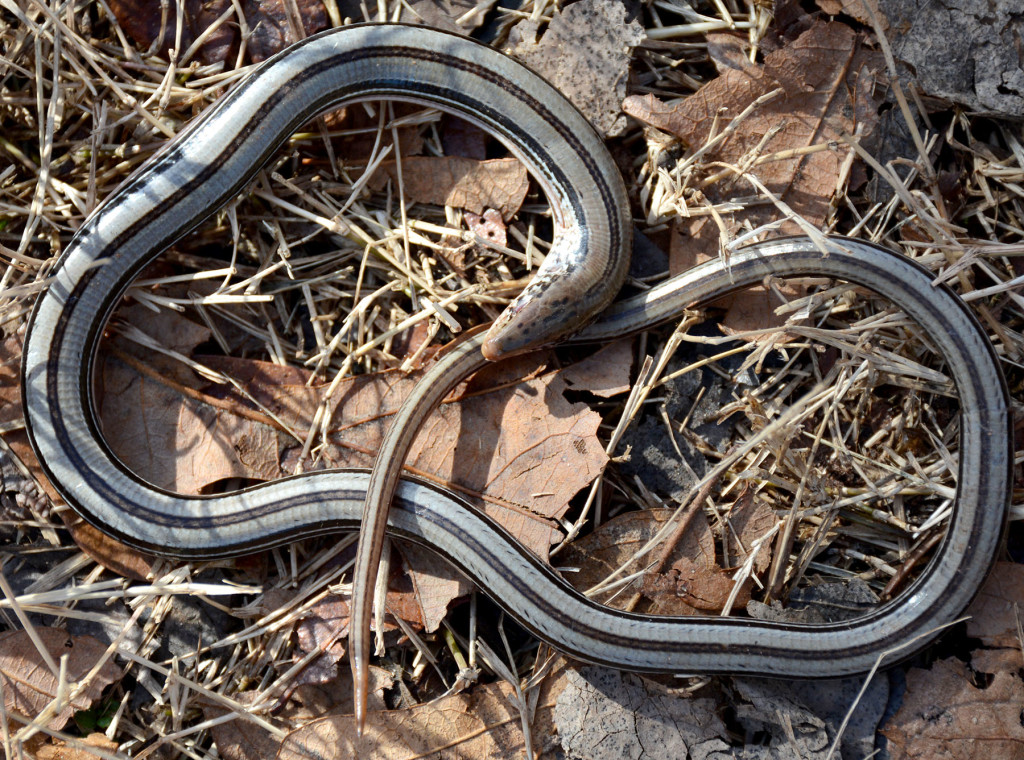
Notice the ear holes and eyelids – which snakes don’t have. His mouth doesn’t open like a snake’s either. If he was alive, and I had tried to grab him, his tail would have broken into pieces or shattered like glass, which is how it gets its name. The broken off tail would keep wiggling to keep my attention while the lizard made its escape. Crazy what nature comes up with. I love this little guy and hope to see a live version of him some day.
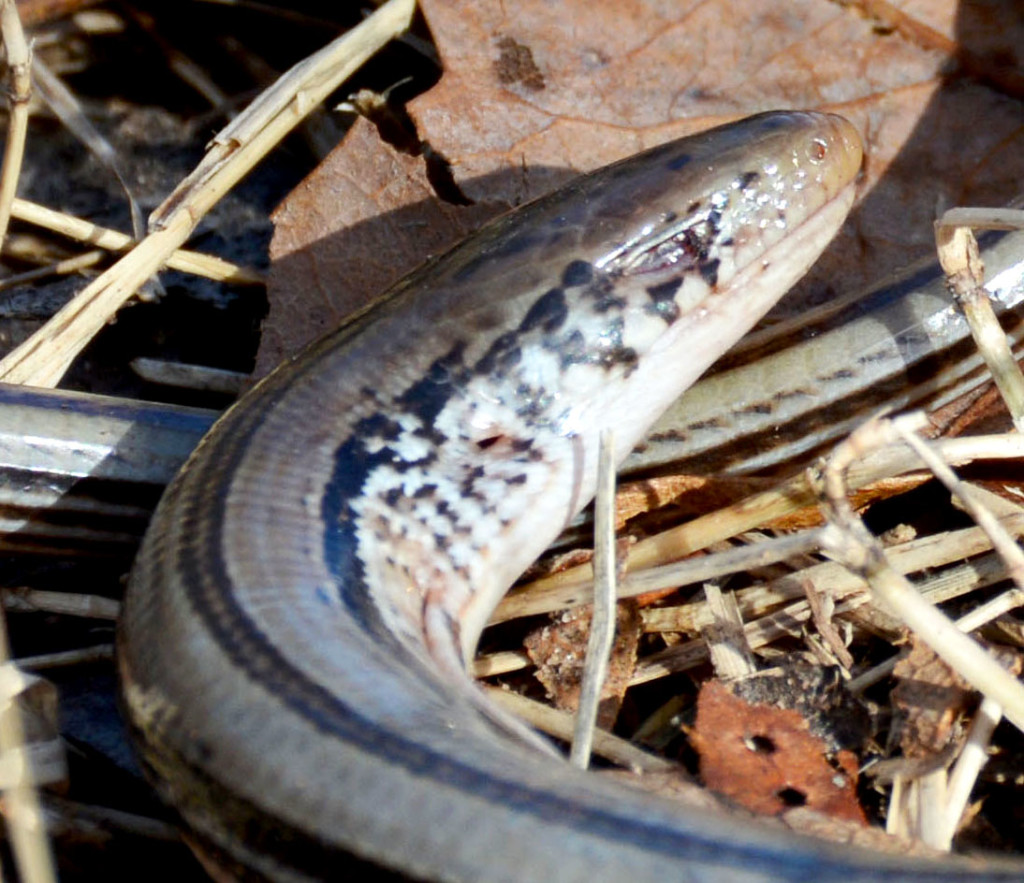
I walked on a bit more and in an open field of grasses a bit later, it occurred to me how much winter interest the variety of grasses had. Nice. Maybe this is our lizards home.
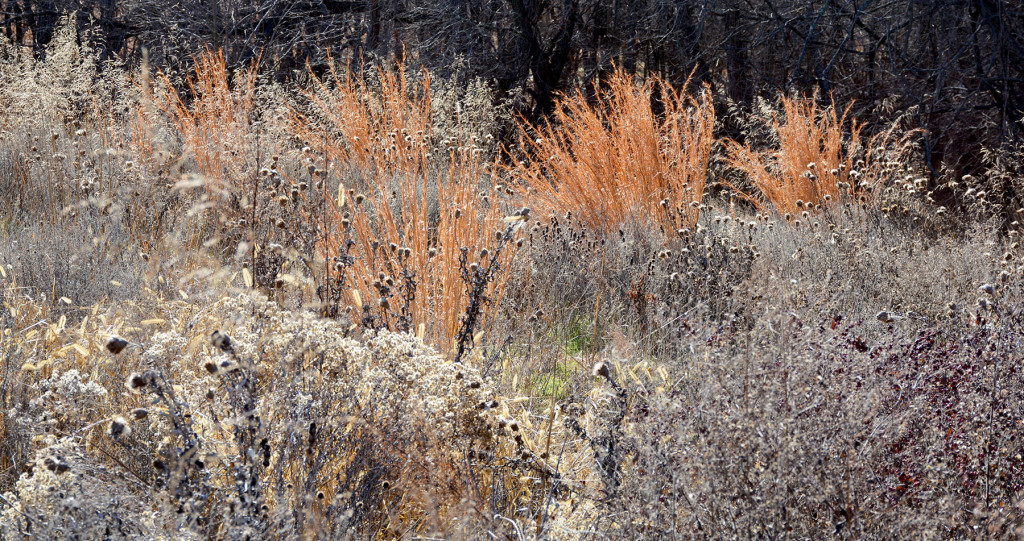
This grassy area was about half as far as I wanted to walk, so I turned around went back, but in a slightly different way. In a shady area just shy of Spring Creek Crossing, the creek was still icy!

Aside from seeing a trail runner and two more cycling groups, the hike back to the car was lovely and undisturbed. Great day to be outside! Cabin fever is cured and souls are happy.